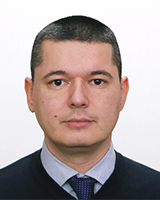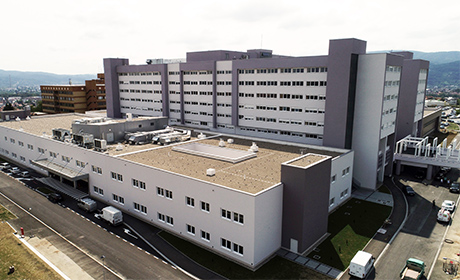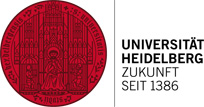Prof. Dr Pedja Kovačević


Prof. Pedja Kovačević was a visiting scientist in Heidelberg from 2005 to 2007 and worked at Heidelberg University Hospital and Thoraxklinik Heidelberg. During this time, he established a close rapport with his host and adviser Prof. F. Joachim Meyer of Heidelberg University Hospital, who now heads the Munich Centre of Pneumology (Lungenzentrum München). Prof. Kovačević is currently director of the ICU at the University Clinical Center of Republika Srpska (UCCRS) in Banja Luka (Bosnia and Herzegovina).
„It takes a village“: Development of Critical Care in Post-war Bosnia and Herzegovina
Critical care is a young medical discipline that began to develop in the 1970s as an independent specialty in the United States, while in Western European countries this process was delayed by ten to twenty years.
When it comes to developing critical care in low- to middle-income countries, the data is very scarce. In these settings, surgical critical care has traditionally been provided by anaesthesiologists in most areas while access to medical critical care is still limited. In post-war Bosnia and Herzegovina, no Medical Intensive Care Unit (MICU) existed until December 2008, when the first modern MICU in the country opened in Banja Luka. Until the establishment of the MICU, medical critically ill patients were treated in poorly equipped classical general wards without cardiovascular and respiratory support and usually without hemodynamic monitoring. Invasive mechanical ventilation and other advanced life support interventions were only possible in surgical intensive care units, to which only a small number of medical critically ill patients gained access to.
A similar situation can still be found in other countries of Eastern Europe and in low- and middle-income countries worldwide. In the case of Bosnia and Herzegovina, a four-year war caused the country's health system to collapse. The immediate post-war years resulted in isolation from the surrounding countries, and the flow of information and exchange of medical knowledge was very poor. All these events – the war and the post-war period, devastation of medical structures and equipment, and the transition of the country from one political structure to another – were a great burden on the health system. Especially for new and young medical disciplines, it was practically impossible to establish effective patient care. Generally speaking, all three crucial links of medicine (clinical practice, education and research) had stagnated and regressed during the war and post-war period. The devastated health and education system did not recognize critical care as a discipline; critical care topics were not taught during undergraduate and postgraduate training and there was no significant research work in this field.

In order to aid its post-war recovery, the European Commission and other European institutions like the Coimbra group and the Union Internationale Contre Le Cancer (UICC) have created various projects to help the mobility of young researchers and doctors from Bosnia and Herzegovina. The main objective was to assist the health and education system and to facilitate the exchange of knowledge and experience between clinicians and researchers in the region. The first physician to receive such a grant for the purpose of education in critical care was Dr Pedja Kovačević of the University Clinical Center of Republika Srpska (UCCRS).
During his training periods at the University Hospital Heidelberg between 2005 and 2007, Dr Kovačević was mentored by Prof. Dr F. Joachim Meyer, a board-qualified specialist in the field of internal medicine, cardiology, respiratory medicine and critical care. He was head of the MICU at Heidelberg University Hospital. Dr Kovačević added training in invasive bronchoscopy techniques at Heidelberg’s renowned Thoraxklinik under the supervision of Prof. Dr Heinrich Becker, then chief of the endoscopy unit.
In 2006, under the guidance and referral of Prof. Meyer, Dr Kovačević applied successfully for the prestigious Travel Award for Young Fellows in Developing Countries by the American Thoracic Society (ATS). Dr Kovačević attended the ATS meeting in San Diego, where he met Bosnian-born critical care specialist Prof. Ognjen Gajic MD from the Mayo Clinic in Rochester, USA.
Prof. Meyer and Prof. Gajic organized the first donation of non-invasive ventilators to the Pulmonary Department of the UCCRS. After his return from Heidelberg in 2006, Dr Kovačević was able to develop a modern medical critical care service there. In the same year, Dr Kovačević visited the Critical Care Department at Mayo Clinic under the supervision of Prof. Gajic, mainly for intensified training in mechanical ventilation, both invasive and non-invasive. One year later, the management of UCCRS and the ministry of health of Republika Srpska, an entity of Bosnia and Herzegovina, approved the establishment of the first modern MICU in Bosnia and Herzegovina. Dr Kovačević was assigned a responsible leadership role in this process.
During the following ten years, Prof. Meyer and Prof. Gajic provided continuous support for the development of medical intensive care, which proved to be a difficult process with multiple obstacles. Prof. Meyer visited UCCRS and worked as a visiting physician and mentor on several occasions in 2007, 2014 and 2016. He gave a series of lectures on intensive care medicine, carried out the first invasive monitoring by pulmonary catheter, the first percutaneous tracheostomy and provided education at the bedside. These activities were also supported by the Erasmus Mundus Plus project of the European Commission.
In order to enhance the development of critical care in Bosnia and Herzegovina, the first draft of the curriculum for critical care specialization training was proposed in 2010 by Dr Kovačević, Prof. Dr Guillaume Thiéry (University Hospital of Saint-Etienne, France), Prof. Gajic, Emir Festic M.D. (Mayo Clinic, USA) and Prof. Meyer. In the spring of 2014, this proposal was accepted with Dr Kovačević becoming the country's first critical care training fellow. Prof. Meyer became the program's first international mentor in Bosnia and Herzegovina. In September 2016, Dr Kovačević successfully passed the board exam in front of an international jury and became the first critical care specialist in Bosnia and Herzegovina and among the first in ex-Yugoslavia region. Two years later, he was assigned as the first program coordinator for the critical care fellowship at the University of Banja Luka Medical School.
Together with Prof. Meyer and Prof. Gajic, Dr Kovačević started the first research projects in the field of respiratory and critical care at UCCRS. In June 2019, Dr Kovačević published a paper titled “Impact of Weekly Case-based Tele-education on Quality of Care in a Limited Resource Medical Intensive Care Unit” in the prestigious journal Critical Care. With this, the development of all three crucial links in critical care medicine has begun: the treatment of the critically ill, education, and research.
“It takes a village” – many highly motivated enthusiasts were necessary to create and realize the care of the sickest medical patients in post-war Bosnia and Herzegovina. Today, the MICU in Banja Luka is certified by ISO standard (9001:2015) and serves as a tertiary referral centre for medical intensive care for the Republika Srpska, and provides health services for a population of 1.200.000 inhabitants. The contribution of Heidelberg University for this project is indisputable and enormous.
Interested in Prof. Kovačević’s work? Contact him via pedja.kovacevic@alumni.uni-heidelberg.de.

